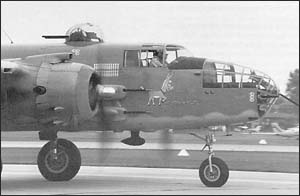Aluminum Welding Part 2
|
Virtually any torch may be considered viable, but this author tends to avoid giant ``railway" torches, and, conversely, small jewelry torches. Most are fine, some are really good and comfortable, and a few might be considered for specialty work.
Hoses of choice are light and flexible, enabling both out-of-position work, and long periods requiring a steady hand.
Regulators, because of the low pressures required, may not be accurate at the low end, and so must be twiddled with the torch lit to establish the best flame. Do this with the torch valves open, setting the largest, best flame for the tip. A glance
|
This oxy-fuel welding on 3003 sheet was simply planished on the wheel without any metal finishing. |
Aluminum OFW flux must be of the highest quality, and strictly specified as a welding flux, not as a brazing or soldering flux. Brazing fluxes, while providing a very poor weld appearance, also re-alloy the weld area with zinc from the zinc chloride they contain. The presence of zinc in this manner, makes the aluminum parent metal weak and brittle.
The proper aluminum OFW fluxes from the old days have mostly disappeared, but a few years ago TM Technologies had the original ALCOA formula revived, and it is now sold under the TM Technologies label. (see TM fluxes)
Special safety eye wear must also be used, both to protect the welder, and to provide a clear view through the yellow-orange flare given off by the incandescing flux.
In the 1920s, cobalt melter's glasses were borrowed from steel foundries and were still available until the 1980s. However, the lack of protection from impact, ultra-violet, infrared, and blue light caused severe eyestrain and eye damage.
Didymium eyewear, developed for glassblowers in the 1960s, was also borrowed, until many complained of eye problems from excessive infrared, blue light, and insufficient shading.
In 1989 TM Technologies patented a new green glass, designed especially for aluminum OFW. It cuts the flare and provides required protection from ultraviolet, infrared, blue light, and impact, according to ANSI Z87-1989 safety standards. As of this writing, this eyewear has no known peer, and no complaints. (see TM 2000 High Accuracy Safety Eyewear)
A stainless ``tooth" brush is essential for scrubbing off the invisible oxide film, just prior to welding.





